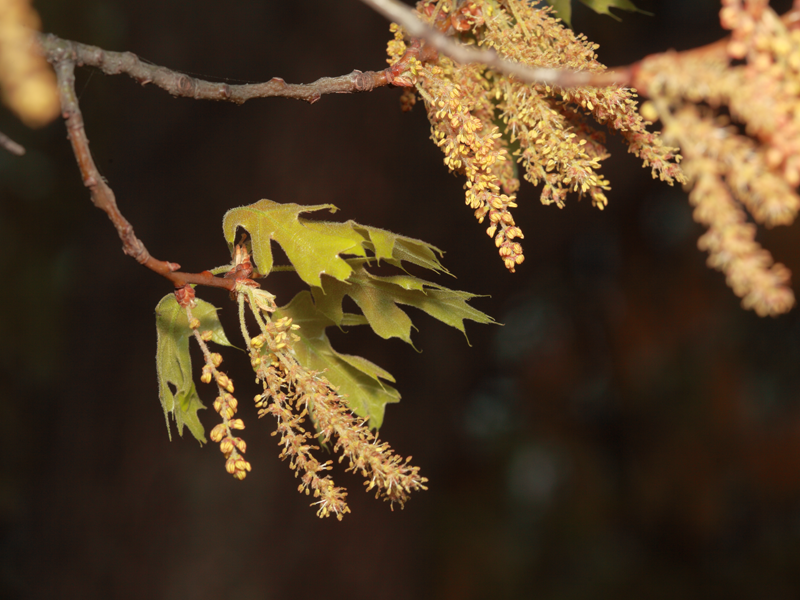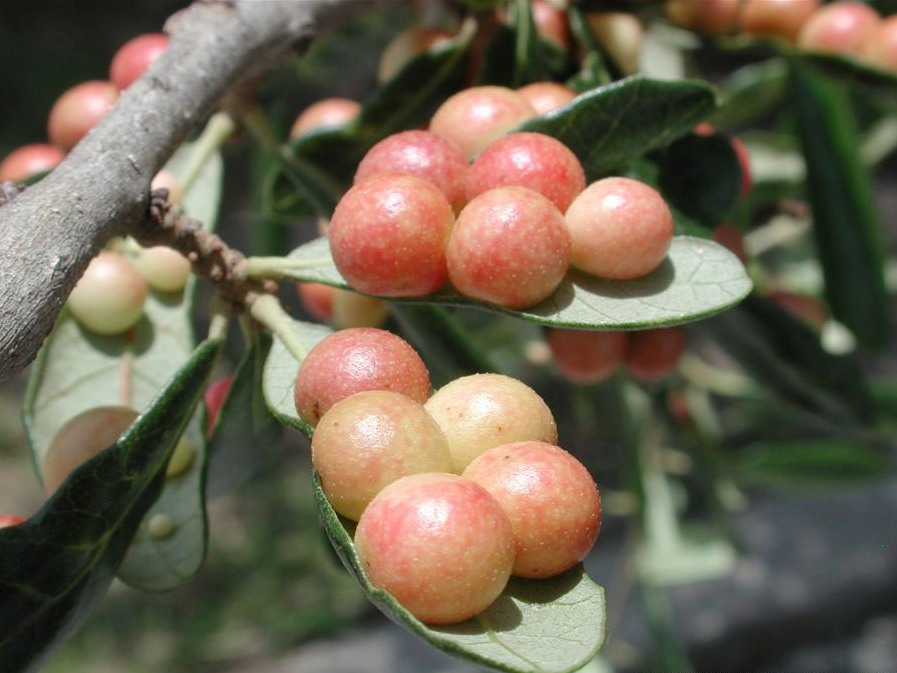
Newly emerging leaves, twigs and flower parts are the most common sites for gall-maker egg laying and gall formation
Every year I receive numerous questions about strange, misshapen growths on the leaves or stems of trees. These growths, called galls, are often the result of insect egg-laying or feeding.
Galls themselves are tumor-like growths produced by the plant in response to chemicals injected into the plant by the adult or larval gall-making insect. The shape, size and form of the gall is determined by the precise chemicals chemicals used by each species of gall-maker. The mechanisms of gall formation, and how these chemicals result in very distinctive and unique galls is still poorly understood.

Vein pocket galls on the underside of southern red oak leaves, Quercus schumardii, are caused by a tiny midge fly. Numbers of these midges in some years can be severe enough to cause noticeable aesthetic damage to trees–unusual for most galls.
Most gall making insects are tiny wasps in the plant-gall making family called the Cynipidae (SIGH nip id EE). Other common galls are caused by tiny flies called gall midges. And some, like the hackberry nipplegall maker that was so common in homes last fall, are relatives of leafhoppers, called psyllids. The interesting thing is that each gall making insects make a distinctive and unique gall–unique enough that it is possible to identify the gall-maker by its gall. If you want to look for galls in our area, most galls will be found on oak and hackberry trees. It’s not usually difficult to find multiple kinds of galls on a single tree.
So today, as you look out on the spring landscape, with its rapidly greening trees, you can be sure that gall-making insects are quite hard at work. Gall formation usually takes place in the spring, when leaves and flowers and stems are rapidly growing. Only during this time of rapid cell division and growth can these insects bend plant cell division to do their bidding. Once a leaf or stem has stopped growing, these hormone-like chemicals can no longer affect the plant.
The purpose for insect-induced galls seems to be to provide a sheltered feeding site for the gall-maker. Because galls provide benefit for the insect at little expense to the plant (only a very few galls seem to affect plant growth or overall appearance significantly), this is sometimes referred to as a form of commensal relationship. The good news for the gardener or tree owner is that galls rarely cause much harm to plants.
Once a gall has formed on a plant, there is no need to kill the insect inside, as whatever energy loss will be suffered by the plant has already occurred. In addition, short of ripping the galls off of the plant, there is no way to kill gall making insects inside their protective homes. So its always best to let sleeping galls lie, and worry about other, more productive things–like getting your taxes done by April 15.
If there was a need to control galls on a tree, now would be the only time to do it. Sprays applied early in the spring could theoretically kill adult gall-making wasps or midges before they can inject their disfiguring drugs. But little research has gone into this practice and I don’t generally advise it.
Instead, as you gaze on the swelling buds and rapidly greening trees in your backyard, just take a minute to consider the gall-making insect. In addition to all the other rituals of spring, these tiny creatures are working like crazy out there to provide little bug caves, or retreats, for their offspring.
For more information, and pictures of common Texas galls, see our publication on galls at http://agrilifelearn.tamu.edu/product-p/e-397.htm

